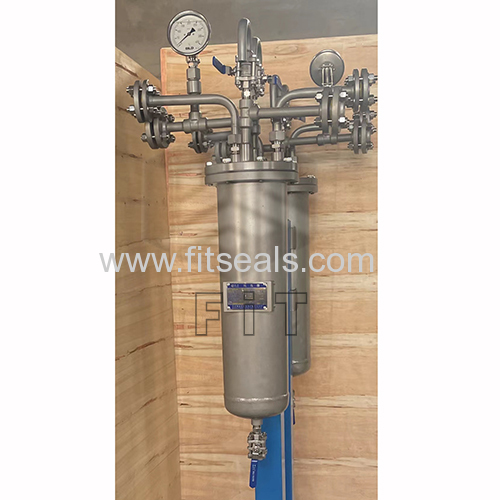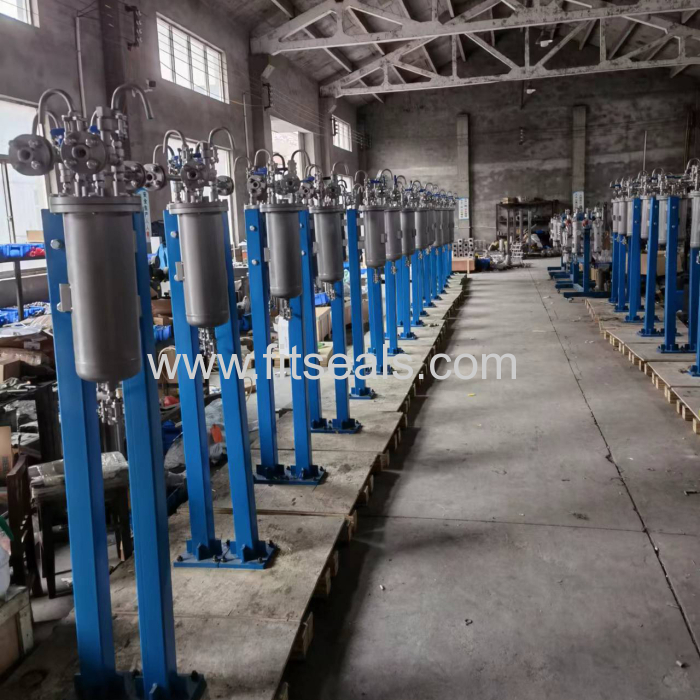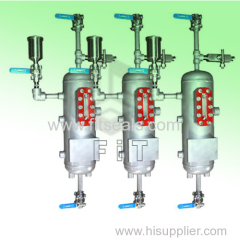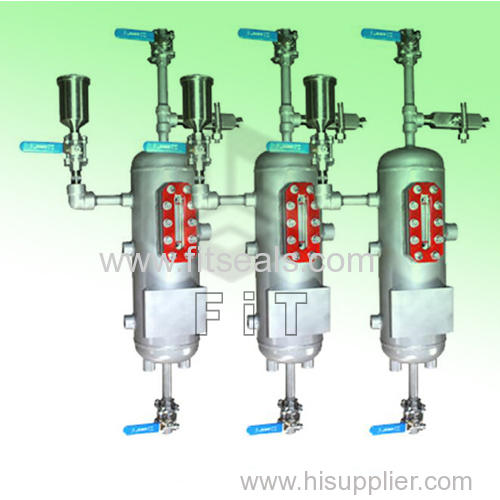| Payment & Shipping Terms | Supply Capacity |
|---|
| Unit Price: | 660.0 USD | Production Capacity: | 300 Sets/Month |
| Trade Term: | FOB,CFR,CIF,EXW | Packing: | wooden carton |
| Payment Terms: | T/T, WU, Money Gram | Delivery Date: | 15 days |
| Min. Order: | 1 Set/Sets | | |
| Means of Transport: | Ocean, Air, Land | | |


Plan 53A uses an external reservoir to provide barrier fluid for a pressurized dual seal arrangement. Reservoir pressure is produced by a gas, usually nitrogen, at a pressure greater than the maximum process pressure being sealed. During normal operation, circulation is maintained by an internal pumping ring. Reservoirs are usually made of pipe and piping components with an internal coil of tubing to remove heat. Unlike the heat exchangers used in Plan 23 systems, cooling water flows through the coils; the barrier fluid flows over the exterior of the coils.


The reservoir is pressurized from an external source, typically the plant nitrogen system or bottled nitrogen. To control pressure, a pressure regulator is installed upstream of the gas supply isolation valve. To avoid a release of potentially hazardous gas, the regulator is not normally self-relieving.


The circulation rate in a Plan 53A system is not controlled directly; it depends on the performance of the pumping ring within the closed loop system. The pumping ring, reservoir and piping are selected to produce the desired operating conditions. Heat soak as well as heat generation must be considered in determining the desired circulation rate.



By definition, Plan 53A is pressurized above the process pressure. The usual guideline is to operate at least 10% above the process pressure but a minimum of 20 to 50 psi (1.4 to 3.5 bar) above the maximum process pressure. The most common means of pressurizing a Plan 53A system is with pressurized nitrogen. API 682 cautions against using gas pressurization in direct contact with the barrier fluid when the reservoir pressure is above 150 psig (10 barg). The concern is that gas is absorbed into the barrier fluid but the API recommendation is overly conservative. However, based on field experience and tests, direct contact gas pressurization can be used up to 300 psig (21 barg) as long as the barrier fluid temperature is less than 250 F (120°C).


A problem with Plan 53A direct pressurization comes if the system is depressurized, for example when refilling the reservoir. Gas absorbed into the barrier fluid at high pressure is liberated at reduced pressure. This means that a bubble of gas might collect around the pumping ring. If so, the pumping ring might not work and the seals will become overheated in the gas bubble. The result will be severe seal face damage.


Category: Other Pump Repair Kits

































